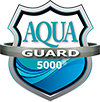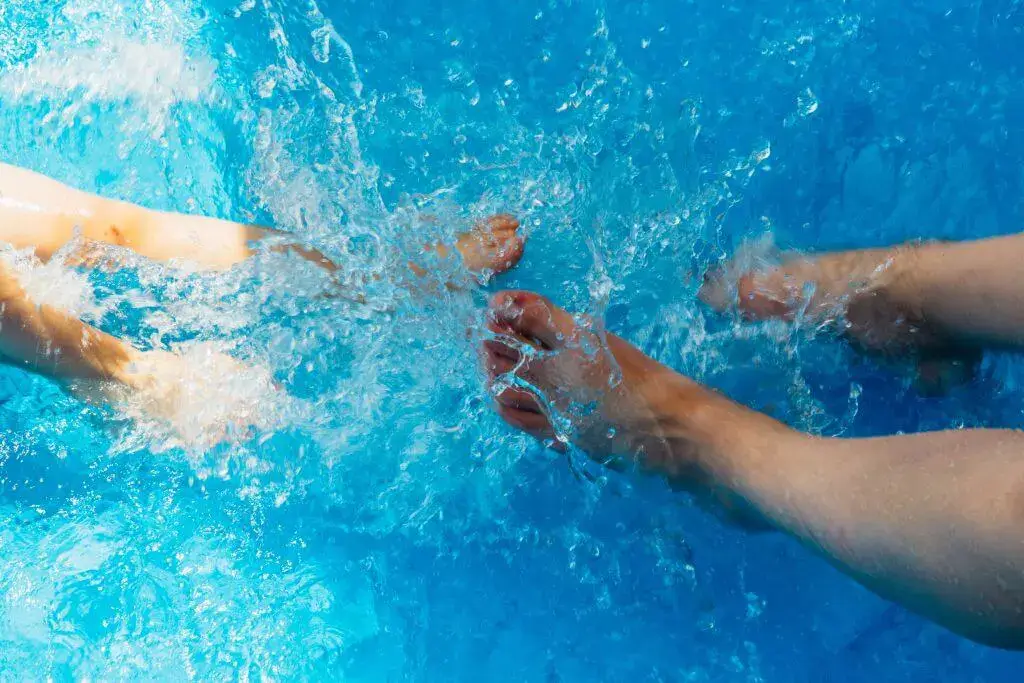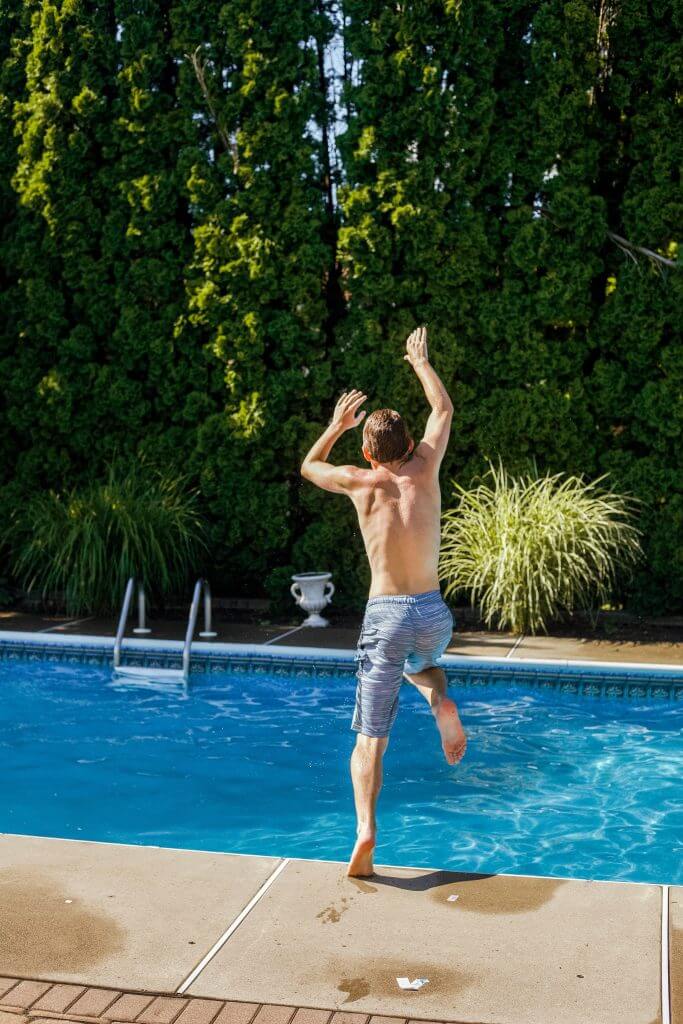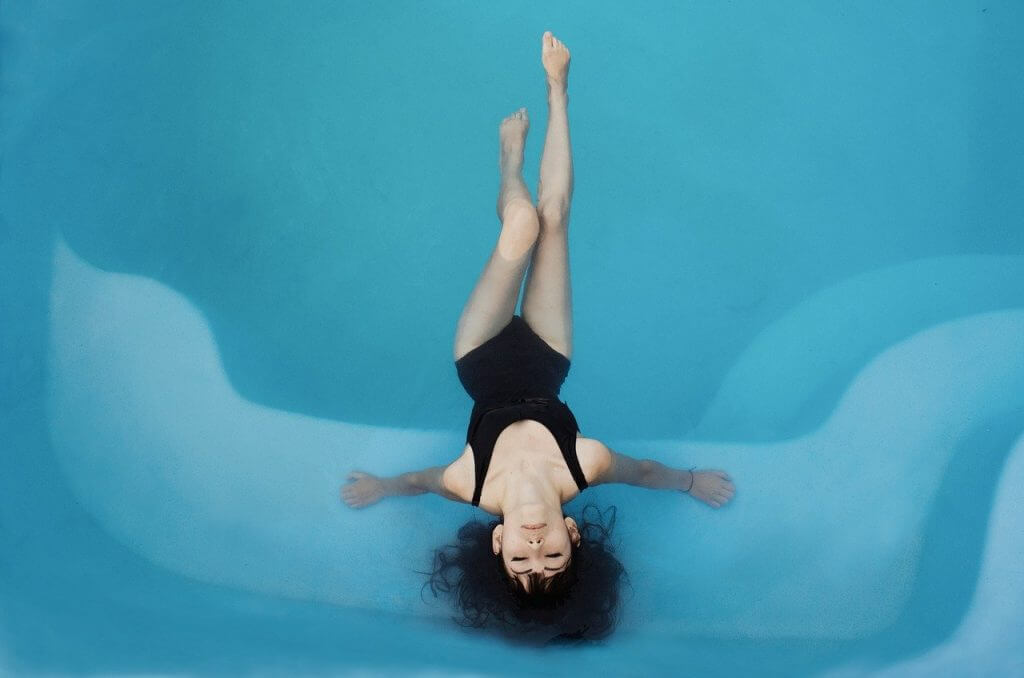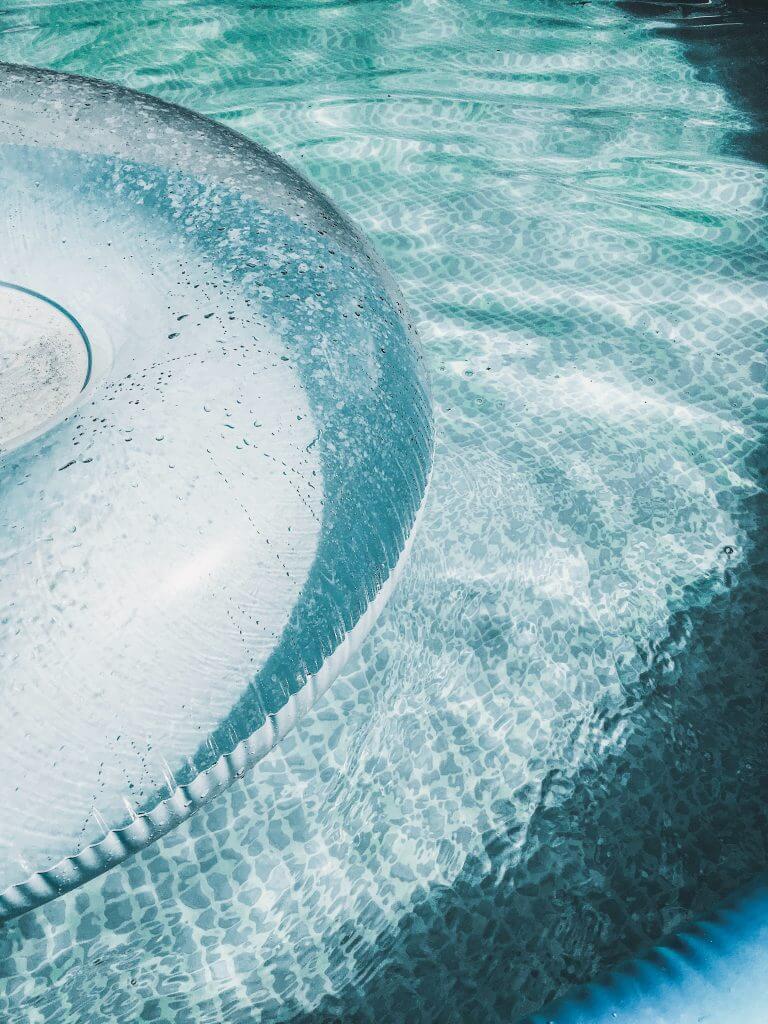Having an in-ground pool in your backyard is an excellent way to have fun and cool off during the hottest days of the year. However, swimming pools aren’t solely about fun. You also have to consider their visual appeal, maintenance, and protection against damage.
Epoxy pool paint is an effective way to transform your pool’s interior surface into a bright, vibrant water feature you will love to show off. The paint also provides a smooth, durable finish that shields the bare surface of the pool from water damage, chemical damage, and other problems.
If you are ready to put the finishing touches on your pool’s interior with an epoxy coating, consult the guide below to learn everything you need to know about the paint, its maintenance requirements, and its applications.
What Is Pool Epoxy Paint?
As solvent-based pool paint, epoxy paint is one of the best options for covering interior swimming pool surfaces. It is incredibly durable and will last up to eight years with simple routine maintenance before repainting is necessary. It works well with many pool types, including concrete and fiberglass pools.
Epoxy pool paint works best on bare surfaces that were not previously painted with materials other than epoxy paint. After the application, the paint will create a highly polished, unified surface that is hard, abrasion-resistant, and non-porous.
Painting a pool with epoxy takes some time to complete because of its long drying process. Unlike acrylic swimming pool paints that take three days to cure, the hardening process for epoxy paint will take about a week for an outdoor pool. Indoor pool curing can take up to two weeks.
People often assume that rain or morning dew will affect the paint if moisture settles on the pool’s surface. However, water won’t affect it three hours after completion.
If rain or dew comes in contact with the paint after three hours into the curing process, a milky discoloration may occur on the epoxy, not within the coating. Luckily, the discoloration on the surface of the epoxy will not last. It will disappear within a few weeks after filling the pool with water, leaving behind a lovely coat of paint.
How Do You Use Epoxy Pool Paint?
Epoxy pool paint is relatively easy to apply, but it does require careful preparation to ensure that you achieve the best results. To prepare your pool for painting, follow these steps:
- Drain the pool’s water thoroughly, and remove all leaves and other visible debris.
- If the pool interior has old paint, use a power washer to remove it. Epoxy pool paint will not adhere well to other paints.
- Use caulk to seal any cracks in the pool and allow it to dry. If the surface has chips, you can use hydraulic cement to patch the area.
- Mix water and muriatic acid to create an acid-based solution, and use it to wash the pool’s walls. Acid washing will etch the pool’s surface, causing it to feel like medium-grade sandpaper ideal for epoxy paint.
- Wash away the acid and apply a trisodium-phosphate (TSP), a detergent that removes traces of acid, oils, and dirt.
- Rinse the pool and allow it to dry for five days. If the pool accumulates standing water from rain, remove it.
When it’s time to paint, make sure the forecast doesn’t include windy or wet conditions for several days. Mix the epoxy pool paint for about five to seven minutes and use a 3/8-inch nap roller to apply the epoxy paint to the walls and floor. Start at the deep end and work your way around.
Depending on the size of your pool, you may need an extension pole to reach all areas of the wall. Continue working toward the shallow end until the entire pool has a fresh coat of paint. Allow the epoxy paint to dry for about four hours, and apply another coat.
It’s best to allow the epoxy paint to dry for at least five days before refilling the pool. Again, remove any standing water that accumulates from rain. After the appropriate waiting period, you can fill the pool and start the filter.
If leaves or insects stick to the paint after making contact with the pool surface while it’s drying, you can gently scrape them away after the paint dries. Sometimes leaves will stain the paint, but this will go away a week or so after filling the pool with chlorinated water.
When painting the pool with epoxy paint in the summer, be sure to add a lot of chlorine to the new water on the first night and vacuum the sediment on the pool floor. Filtration should continue for 24 hours until the water becomes clear. If you’re painting in the winter, you can wait up to a week to chlorinate the pool after refilling it.
How Much Does Pool Epoxy Paint Cost?
The price of epoxy paint is $270 on average for a kit containing two gallons of solvent-based paint. It’s notably more expensive than chlorinated rubber-based pool paint, which has a mid-tier price. How much it will cost to paint your pool depends on several factors, such as labor, pool type, and pool size.
A single two-gallon kit of epoxy pool paint is not enough to cover the surface of your pool, regardless of its size. A typical small-sized pool is about 12×24 feet. To cover that much surface, you will need about eight gallons of paint, which can run you around $1000.
Substantially larger pools can require twice the amount of epoxy paint, which drives the cost of supplies higher. At a minimum, you will likely pay $1000 in epoxy alone.
The type of pool you are painting is another consideration when it comes to the cost of epoxy paint. A bare concrete pool usually has a rough surface that will not allow the epoxy paint to achieve the ideal bond.
To remedy the situation and get the best results with the epoxy paint application, you must first purchase and apply a primer to smooth out the surface and fill in rough patches. Epoxy primer also works for fiberglass pools, but the primer is another expense you will have if your swimming pool requires the treatment.
One coat is not usually enough to make use of the pool coating’s attractiveness and protective qualities. To create a high build that produces a rigid, abrasion-resistant surface that can rival expensive refinished pool surfaces, you will need to apply two to three coats of swimming pool paint.
The final consideration to make when determining how much it costs to use epoxy pool paint is labor. If you are painting your pool without professional assistance, you may only need to purchase the paint and primer, effectively reducing your costs. However, professional painting services are the best option to produce maximum quality results, and the labor could cost over $500, not including paint and supplies.
Does Pool Epoxy Paint Require Maintenance?
On average, a proper epoxy pool paint application will keep your pool attractive and protected against scratches and cracks for five to eight years. However, the amount of time the paint will last relies on how well you maintain your swimming pool and its surface. Epoxy paint is relatively low maintenance, but it requires some moderate treatment to ensure that it remains in optimal condition.
During the spring and summer months, when you’re likely to use the swimming pool often, you will need to do the following tasks:
- Vigorously brush the pool’s walls and floor surfaces
- Filter the water for eight hours after brushing surfaces to remove traces of debris and algae
Ideally, the brushing and filtering process should occur regularly during months of heavy use, once every week or every two weeks. You should follow the same maintenance steps during the cooler months but perform them every six to eight weeks.
Brushing the pool walls and filtering the water helps the epoxy paint retain its appealing high-gloss finish and prolong its lifespan. The routine is also hygienic and prevents the pool from supporting excessive algae growth that could affect the pool water’s pH level.
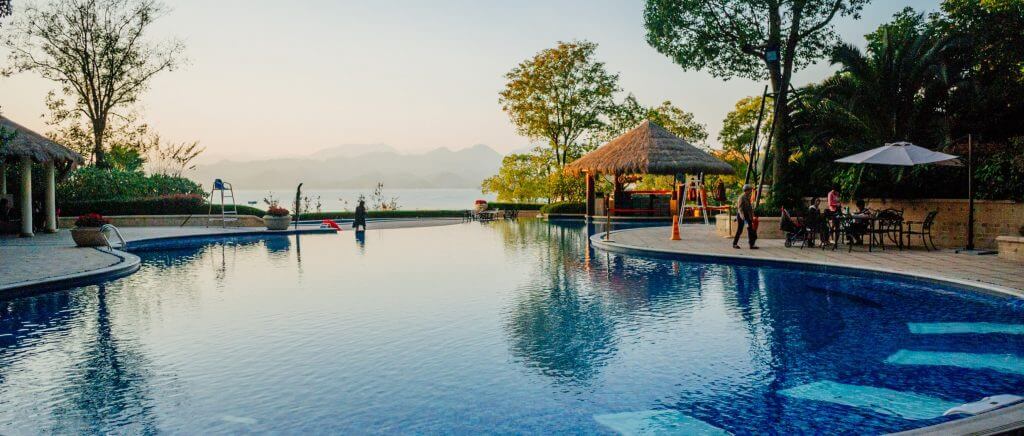 Pros and Cons of Epoxy Pool Paint
Pros and Cons of Epoxy Pool Paint
Epoxy pool paint is highly beneficial for in-ground swimming pools. Still, the material has its share of advantages and disadvantages.
Pros
- Available in many paint colors
- Helps seal small cracks in the pool’s surface
- Protects the pool from damage and algae growth
- Has a high-gloss polish and smooth finish
Cons
- Long curing process
- Lots of prep work
- Only works on bare surfaces or old epoxy paint
- Can be expensive
- Slippery when wet
AquaGuard 5000
Anyone who wants to improve their pool’s interior appearance while protecting the structure’s integrity should turn to epoxy pool paint. By following the paint’s application process, you will have a stunning pool with a durable and attractive surface that will last for years.
AquaGuard 5000 is the number one epoxy pool paint option of the AquaGuard brand from Aquatic Technology Group, LLC. AquaGuard 5000 refurbishes various pool types for commercial and residential use as the best performing brand for pool resurfacing and refinishing products. To learn more about our exceptional products, contact our team today.
